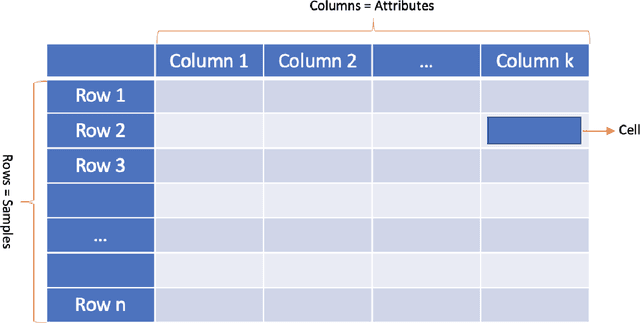Embeddings for Tabular Data: A Survey
Paper and Code
Feb 23, 2023



Tabular data comprising rows (samples) with the same set of columns (attributes, is one of the most widely used data-type among various industries, including financial services, health care, research, retail, and logistics, to name a few. Tables are becoming the natural way of storing data among various industries and academia. The data stored in these tables serve as an essential source of information for making various decisions. As computational power and internet connectivity increase, the data stored by these companies grow exponentially, and not only do the databases become vast and challenging to maintain and operate, but the quantity of database tasks also increases. Thus a new line of research work has been started, which applies various learning techniques to support various database tasks for such large and complex tables. In this work, we split the quest of learning on tabular data into two phases: The Classical Learning Phase and The Modern Machine Learning Phase. The classical learning phase consists of the models such as SVMs, linear and logistic regression, and tree-based methods. These models are best suited for small-size tables. However, the number of tasks these models can address is limited to classification and regression. In contrast, the Modern Machine Learning Phase contains models that use deep learning for learning latent space representation of table entities. The objective of this survey is to scrutinize the varied approaches used by practitioners to learn representation for the structured data, and to compare their efficacy.
 Add to Chrome
Add to Chrome Add to Firefox
Add to Firefox Add to Edge
Add to Edge